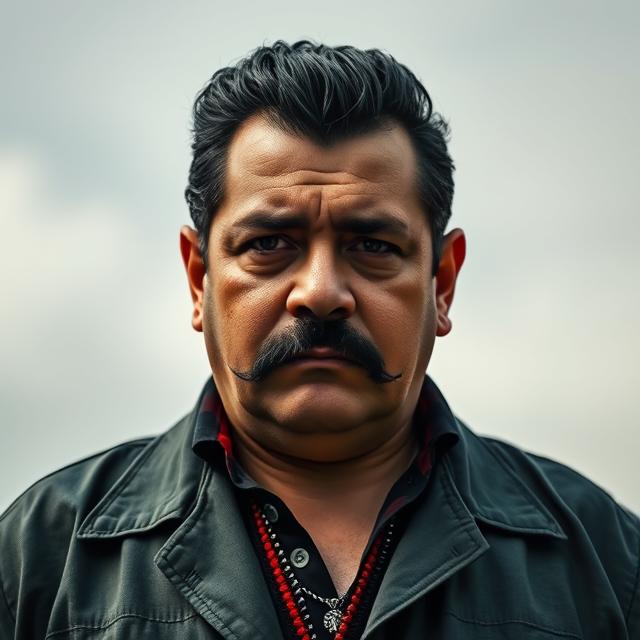“El Chapo Guzmán: The Rise and Fall of a Drug Cartel Kingpin”
Introduction to Joaquín “El Chapo” Guzmán:
Joaquín Archivaldo Guzmán Loera, widely known as “El Chapo”, is one of the most notorious figures in modern criminal history. As the leader of the Sinaloa Cartel, a powerful drug trafficking organization based in Mexico, El Chapo rose from humble beginnings to become a global symbol of organized crime, wealth, and audacity.
His life story encapsulates the complexities of the drug trade, blending ambition, cunning, and violence with an almost mythic personality. The rise and fall of El Chapo Guzmán is not just the story of one man, but a glimpse into the systemic issues of corruption, poverty, and global demand for drugs that fuel the drug trade.
This introduction will outline his early life, his rise to power, the operations of the Sinaloa Cartel, his multiple captures and escapes, and his ultimate downfall, as well as highlighting the broader social and political implications of his reign.
Early Life and Beginnings in the Drug Trade
El Chapo was born on April 4, 1957, in La Tuna, a rural village in Sinaloa, Mexico. Raised in poverty in an area known for opium and marijuana cultivation, Guzmán entered the drug trade at a young age. His initial introduction to the narco world came through his father, a small farmer and drug trafficker, and by his teens, El Chapo was working for local traffickers.
His ambition and ruthlessness set him apart, and by the 1980s, he began working under Miguel Ángel Félix Gallery the “godfather” of Mexican drug trafficking. Women’s early role involved overseeing the transport of drugs, particularly marijuana and opium, to the United States.
His knack for logistics and willingness to use violence earned him a reputation as a reliable and dangerous operative.
Rise to Power and the Sinaloa Cartel
After Félix Gallery arrest in 1989, the Mexican drug trade disintegrated, leading to the creation of rival cartels. Guzmán took advantage of this opportunity to co-found the Sinaloa Cartel, which became one of the world’s most powerful criminal organizations.
Under his leadership, the cartel diversified its operations, smuggling cocaine, heroin, methamphetamine, and marijuana across the U.S. border. El Chapo’s innovative methods, such as building sophisticated tunnels beneath the U.S.-Mexico border and using everything from submarines to commercial airlines for smuggling, revolutionized the drug trade.
His ability to bribe officials, form alliances, and eliminate rivals solidified his dominance. By the 2000s, Forbes listed him as one of the richest and most influential people in the world, with a net worth estimated to be in the billions.
The Myth and Infamy of El Chapo
El Chapo’s nickname, which means “the little one” (due to his 5’6”) height, reflected his large personality. He cultivated an image as a folk hero in parts of Mexico, particularly Sinaloa, where he funded community projects and was celebrated in narcocorridos (songs glorifying drug lords).
However, his empire was built on brutality, with thousands of deaths attributed to cartel wars and his orders. His ability to evade capture added to his legend. After his first arrest in Guatemala in 1993, he was imprisoned in Mexico, but in 2001 he escaped in a laundry cart. The escape cemented his reputation for dodging authorities and fueled his global infamy.
Captures, Escapes, and Final Downfall
El Chapo’s second arrest in 2014 was a major victory for Mexican and U.S. authorities, but his audacious escape in 2015 through a mile-long tunnel dug into his prison cell stunned the world. The escape exposed the deep corruption within Mexico’s prison system and humiliated the government. His eventual capture in January 2016, after a manhunt and a bizarre meeting with actor Sean Penn and Mexican actress Kate del Castillo, was the beginning of the end.
Guzmán, who was extradited to the United States in 2017, faced trial in New York in 2018. The highly publicized trial brought forth shocking details of his operations, which included bribing top Mexican officials and committing gruesome acts of violence. In 2019, he was sentenced to life imprisonment plus 30 years, and he is currently incarcerated at ADX Florence, a U.S. supermax prison.
Broader Implications
El Chapo’s story is more than a criminal biography; it shows the systemic challenges of tackling the drug trade. The Sinaloa Cartel’s success was made possible by corruption, weak institutions and overwhelming US demand for drugs. His downfall, though a victory for law enforcement, did little to dismantle the cartel, which continues to thrive under new leadership.
His life raises questions about the effectiveness of the war on drugs, the role of poverty in fuelling crime and the global impact of drug trafficking. El Chapo’s rise and fall is a saga of ambition, power and hubris, offering lessons on the human cost of the drug trade and the resilience of criminal networks.
Share this content:




Post Comment